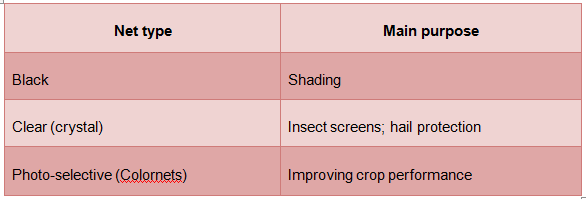Agricultural Films And Bonding Market Insights - Photo-Selective Shade Netting Improves The Performance Of Horticulture Crops
Agriculture has been the means of living for human population since ages. With an increase in the global population, which is expected to reach over 9 billion by 2050, agricultural waste & crop damage needs to be minimized and distribution of agricultural products needs to be improved.
Advancements in biotechnology have led to revolutions in traditional farming methods to a more scientific approach. Implementation and employment of highly efficient technologies in agricultural industry is expected to increase crop yield, and hence, influence the overall productivity.
Associations such as Sustainable Agriculture Network (SAN), AGRA (predominant in Africa), and GLOBAL G.A.P. Academy provide expertise to farmers worldwide to set standards and achieve new heights in the field of agricultural development. Prevalence of schemes and certifications given by authorities such as Integrated Farm Assurance (IFA), The International Gold Standard in Farm Certification, and GFSI schemes in agriculture have improved standardization in products and production methods.
Rising standards of global farming in production of safe food is driving the agricultural films market. EU Common Agricultural Policy (EU CAP) is expected to accelerate self-sustaining improvements in food production to meet the increasing demand.
Historically, natural mulches such as compost straw, hay, and wood chippings have been used for agricultural films. However, over the last 50 years, plastics and paper are more commonly used for agricultural films. The paper has been found less effective & costlier owing to its poor wet strength and higher price as compared to that of plastics. As a result, plastic-based films, twines, and nettings are becoming the primary choices for agricultural application.
Agricultural films, twines, and nettings are plastic based, multi-season protective layer used as a cover or wrap over the soil. These films accelerate plant growth and help produce a higher yield. Agricultural films offer several competitive benefits such as an increase in soil temperature, reduced erosion, suppressing the growth of weeds, supporting seed germination, acting as fumigation barrier, and offering protection against harmful UV rays.
Companies are trying to develop new & improved products to increase the productivity and reduce crop wastage caused due to pests, climate, and other such factors. Some of the technologies recently developed in the industry are photo-selective netting and nickel quenchers & hindered amine light stabilizers (HALS).
The photo-selective shade nets are used for screening different parts of the net spectrum. Major goal of developing photo-selective netting is to make investment in the net covering cost effective and to achieve specific physiological benefits, in addition to the basic protective function of the nets. The technology can be adjusted to fit different crops, cultivars, climates, and market demands.

UV radiation is a primary cause of agricultural film (ag-film) degradation. These films are made of polyethylene, which withstands extreme weather conditions such as exposure to UV radiation, contact with soil disinfectants & crop protection chemicals, and mechanical stress. Without the addition of nickel quenchers & HALS in manufacturing agricultural plastics, the use of films and nettings would be limited. Therefore, various UV stabilizers are used to interrupt the degradation process and extend the life of ag-films.
Despite all the advantages of agricultural films, these films are a major contributor to the increasing problems of plastic waste disposal. A notable portion of these plastic films waste is left on the farm or burnt uncontrollably by the farmers. Regulating bodies such as EPA and Reach are formulating stringent guidelines for proper disposal and recycling of plastic-based agricultural waste. Regulations regarding the use and recycling of plastic are being followed in regions such as Europe, North America, and Asia Pacific, thus hampering the growth of agricultural films market.
 In-depth report on global agricultural films & bonding market by Grand View Research:
In-depth report on global agricultural films & bonding market by Grand View Research:
https://www.grandviewresearch.com/industry-analysis/agricultural-films-bonding-market